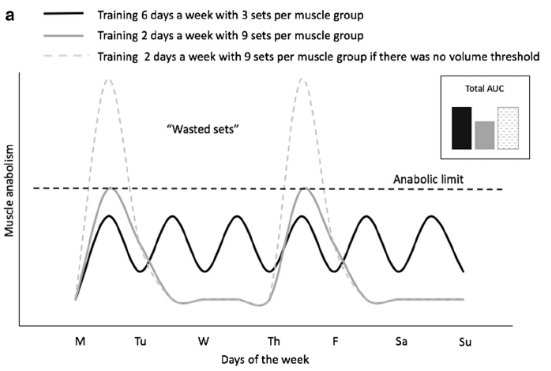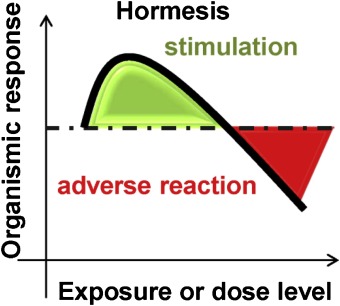Hello Friends! I am Muhammad Al-Sharif, your fitness expert with another blog post. I welcome you to Best Fitness Life Blog again. This time we are going to discuss the frequency of training. We have all had doubts about the style. How often is it better to train each muscle group?
Is a frequency 1, 2, or 3 better to gain muscle mass? Does the frequency of training in hypertrophy influence as much as we think? Are there more important variables to consider? So how do I divide the routine to give the best frequency to my muscles? All this and much more we are going to see today here in this article.
If you are interested in training and how to maximize your muscle mass, then I recommend you read on.
What is the frequency of training?
The answer to this question is simpler than it seems. Training frequency is no more than the number of times you train each muscle group per week. To make it easier to explain and understand, we are going to use the one-week period as a metric for this variable.
But we could also establish another period that suits us better like 10 days, 14 days, a full mesocycle of one month for example, etc. Therefore, when I refer to the training frequency in this article, we will talk about a period of one week, to make it easier and more educational for us.
What is the best frequency of training?
At this point is where I reveal the mystery that interests you so much: What is the best possible training frequency? And I will answer this question with this one:
Do you equal or not the training volume? But, why am I answering this? Because today the most accurate thing we can say about the Training frequency is that it becomes a secondary variable equal to Training volume. Let’s put an example to understand it even better:
EXAMPLE
Imagine we have two bodybuilders, Michael and John. We are going to add the same weekly training volume to both of them:
8 series (for example) with the difference that Michael will do them in two days (one day he will do 4 series and the other day another 4) and John will do them in 4 days (2 series each day).
Who trains better then? Michael or John? The answer is that it depends on the training volume that each can tolerate. It is the maximum recoverable training volume.
We will talk about this in future sections so that you can understand it much better. For now, keep in mind that regardless of the training volume, the frequency is not so important. But you will see how as we raise these variables.
What factors determine the frequency of training?
In a review study by Dankel et al. 2017 was established as the most interesting conclusion that in training we have what he calls as an “anabolic limit” per session. Below which is the optimal number of effective series (those that will stimulate muscle protein synthesis). Above that limit is what he calls the “wasted series” because they are not effective for hypertrophy.
Well, precisely this “anabolism limit” is the maximum recoverable training volume that we have talked about previously. The maximum number of effective series from which our body is able to recover in order to perform optimally in the next training session.

Source: Dankel et al. 2017. Figure taken from Research Gate
This is very much related to the concept of hormesis. That is, a stimulus (in this case training) which applied in a certain amount is positive for us (to gain muscle mass in this case). But that when it exceeds a certain limit it becomes a negative stimulus. (Continuing with the training analogy, is more muscle damage, more stiffness and less performance in future sessions).

Do you understand now why in the previous example Michael and John could end up doing the same number of series per week? However, we could not know who was training better because of the way to divide them. It is because we did not know the maximum recoverable training volume (MVR) and the Minimum effective volume of each? (both per week and per training session).
That is because we cannot know if 2 sets of pectorals per training session. For example, under real conditions, 2 sets for a muscle group ARE too little volume. This is enough to stimulate John’s muscle mass. Or if 4 series per session is too much volume for Michael.
In the first case, John would not reach the (minimum effective volume) and Michael would exceed the maximum recoverable volume. Neither of them is training well and what science has told us so far is that they would both improve in a similar way. It is because they have the same training volume. Personally, I have some things to clarify regarding this. I clarify it in the following sections. Continue reading!
What is the importance of volume to establish frequency of training?
The review study by Dankel et al. dates from 2017. This study suggested that there is a volume limit per session. Until then, the systematic review with meta-analysis existing up to now was (of course) by Schoenfeld et al. 2016.
As we know, a review study has much less scientific evidence than a systematic review of the literature with meta-analysis. So when in doubt, we will always have to pay more attention to studies with greater methodological rigor and scientific evidence.
As long as the training volume is equalized, the frequency becomes a secondary variable. In addition to pointing out that higher frequencies like 2 or 3 seem to be higher than lower frequencies like frequency 1.
Training frequencies 2 to 3 times weekly seemed to be higher than frequencies 1
Larger muscle groups trained at least twice a week to maximize hypertrophy. Due to a lack of data, it is unclear whether training muscle groups more than 3 times per week could improve the hypertrophy response.
Training volume prevails over frequency of training
The limited body of evidence does not support the greater benefits of manipulating the frequency per training session when the training volume of the groups is equal. The frequency varies throughout the periodization of the training cycle.
Given the potential for over-training that exists, it is advisable to vary the frequency of training throughout the prioritization of the training cycle. In other words, it depends on the mesocycle in which we find ourselves. It may be more convenient for us to do a frequency 1, 2, or 3. This is important in order to give different stimuli to the muscle. Also, it is good to reduce the probability of injury due to excessive overload.
A limitation of this study is that only 7 studies were included in the meta-analysis. There was a lot of heterogeneity between subjects from the different studies. This means that the established conclusions cannot be applied to everyone.
For example, in beginning subjects, we know that using higher frequencies than those proposed in the Schoenfeld study is beneficial for the reasons. There is a new systematic review with a more updated meta-analysis by Schoenfeld et al. 2018. It is a statistical analysis of all the scientific literature published from 2016 to 2018.
What if we have a very high training volume?
This is where the training frequency already plays an important role, especially with regard to our sports performance. Consider a person who has just started in the gym for the first time and a competitive bodybuilder.
Who will need more training volume to improve? The answer is obvious, the competition bodybuilder will have a Minimum volume of training much greater than the first that with doing anything will improve.
That explains why when we all start in the gym without following any strict schedule we improve. Simply because of the different stimulation that we give to the muscles. And that’s why as time passes we get stuck because we haven’t programmed anything from the beginning.
Example
So, following the example from before: As this competition bodybuilder has such an exaggerated training volume. We are going to say, for example, that in order for him to continue hypertrophying his chest, he needs about 40 sets.
We cannot put it all in one session. Because the muscle is going to end up so drained that you probably can’t finish that workout. And after two days (with high probability), you will have fearsome laces that may not allow you to train properly and do quality training. It is there where the variable of the training frequency is our ally.
We can divide that volume of 40 weekly sets into 20 and 20. It is in such a way that now our competitor can finish his workouts well. Having done an effective volume in that training session which added to the volume of the second session of the week. It is in the event that bodybuilder does frequency that we will have his minimum training volume of the week and per session.
What if we have a very low training volume?
Well continuing with the example from before: In the case of the typical novice who has just entered the gym and who has not touched a dumbbell in his life. We said that his minimum training volume was going to be much less than that of the competition bodybuilder.
In this case, our fellow initiate can use the training frequency to divide that minimum volume into several days. This allows him not to overload the muscle. Avoid (as far as possible) the development of terrible stiffness. This can hinder its progression. It is better for those who have just entered the gym to program a Full-Body routine. These are for several reasons.
You don’t tolerate so much training volume
Because, as we have said, your muscles cannot tolerate as much training volume as more advanced people in weight training. So, they can take advantage of lower volume but often higher workouts. For example 2-3 times per week. This is to achieve that minimum optimal volume at the end of the week.
You don’t know the technique – Frequency of Training
Because normally, as you are a beginner, when you enter the gym you do not know very well how to do the exercise technique (especially multi-joint exercises). This is why it can be useful to start working with the bars without load to first do the exercise technique well.
When it is established, then start to put weight on the bars. So, working the technique of the basic exercises like the squat, the bench press, the military press, the deadlift, the pull-ups, etc.
Several times a week will be a key factor for the athlete’s progression. Because by repeating the same motor pattern so many times, the probability that it will end up doing a good performance in less time is higher.
What is the best training frequency?
When it comes to the frequency of training, the higher the volume, the higher the training frequency. Although I also have to comment that this table has an important limitation. It does not take into account beginner subjects. They probably cannot tolerate 10-15 sets per muscle group in the same session.
What is the best training frequency for beginners?
Taking into account all that has been said so far, we could conclude that a frequency 1 could be enough for a beginner. A Weider routine, for example, could do that. It may not be optimal. Because with such a low frequency, there will not be enough repetition a week. It is of the same exercise to practice it and master the correct technique. Continue reading!
Because as we mentioned before, a beginner should focus on mastering the technique of the exercises. It is about starting with basic or multi-joint exercises. This is not possible if we only do 4 sessions of the same exercise each month.
This is basically what would allow us to do a routine frequently 1 like the Weider. It is one of the routines most used by beginners in gyms. Although being a beginner you can progress with very little. A frequency 1 is too low to get a good stimulus and repeat the exercises enough to master the technique. Period!
More efficient is to divide your training volume into two sessions each week. Use a frequency 2 for each muscle group. A frequency of more than 3 for a beginner is feasible due to the low volume of training they can tolerate.
How to Achieve it?
You are going to progress. You will not be interested in much more than your minimum effective training volume. Therefore, having a low training volume and a frequency of 2 or 3 you will not need to go 5 or 6 days to the gym every week.
Training 3 or 4 days you could perfectly meet a frequency 2 for each muscle group with full-body or torso/leg type routines. Being able in this way to give priority to basic or multi-joint exercises. So, the little stimulation that they can give to each muscle group is enough to generate those adaptations.
As a beginner you should take advantage of that and focus on practicing and mastering the technique of the exercises. Then you can take advantage of that transfer in analytical exercises. Focus your first year on mastering the technique at a low volume but at a good intensity.
Notes on Frequency of Training
Frequency of Training is the number of times per week that you train a certain muscle group.
There is no best training frequency. It is about adapting to the context of the individual despite the latest studies. The most appropriate frequencies to gain muscle mass is between 2 and 3 times a week.
The main limitation of the studies that establish the training frequency 2 and 3 are the best for gaining muscle mass. It is that the vast majority are performed in well-trained athletes. This means that these are not extrapolated to beginners in strength training.
The latest studies affirm that at training volume equality. The frequency of training is not an important factor to gain muscle mass (although I repeat, the subject’s context also has a lot to say here).
Training volume is the star variable for muscle mass gain, above the training intensity. The frequency of training is a secondary variable. It is in comparison and acts as an ally of training volume to maximize its training frequency.
Conclusion
The frequency of training is closely related to the concept of hormesis. It is in such a way that it is a protection factor against excessive muscle damage. This would cause stiffness because it helps us to divide the training volume effectively.
Varying training frequency over a periodization can be very beneficial. It is to rest of some advantageous muscle groups. Also, this is about to emphasize some others more backward, in addition to giving new stimuli to the muscle.
With high training volume, the frequency of training makes it possible to divide that optimal volume in 2 or 3 days and avoid overtraining.
At low training volumes, the training frequency enables beginning subjects to progressively pick up the pace of training. This is in addition to reducing their risk of injury.



